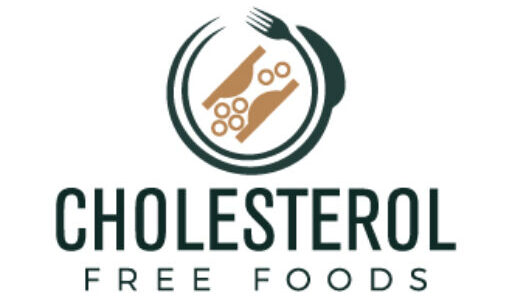High Cholesterol In Children
Some children may have high cholesterol, which can affect their future health. Here’s what you can do to help.
There is a strong relationship between high blood cholesterol, morbidity (related diseases), and mortality from cardiovascular disease in adulthood. If high blood cholesterol levels are maintained over time, plaques and aneurysms can form in the arteries, impeding the passage of blood, promoting the formation of blood clots, and impeding circulation, leading to the risk of stroke, peripheral vascular disease, ischemic heart disease, and coronary heart disease.
Causes Of Cholesterol In Children
The most common cause of high cholesterol in children is genetic. In many cases, one parent has high cholesterol and cardiovascular disease runs in the family.
Metabolic diseases with low morbidity (hyperlipidemia) also have high cholesterol. In healthy children, high cholesterol is caused by an inadequate diet high in saturated fat, a sedentary lifestyle, and obesity.
Different Types Of Cholesterol
Total cholesterol consists of two types of cholesterol: LDL cholesterol or low-density lipoprotein, also known as “bad cholesterol”, and HDL cholesterol or high-density lipoprotein, also known as “good cholesterol”.
These adjectives are used because high levels of LDL cholesterol increase the risk of aneurysm formation and arterial disease, while high levels of HDL cholesterol protect the arteries from atherosclerosis.
Cholesterol Levels In Adolescents
Normal cholesterol levels in children are slightly lower than in adults, and as in adults, cardiovascular risk is strongly associated with high levels of bad or LDL cholesterol.
- Total cholesterol: normal 140-160 mg/dL
- High cholesterol: 190 mg/dL or higher
- Normal LDL cholesterol: less than 100 mg/dL
- Normal HDL cholesterol: 35 mg/dL or higher
Tips For Cholesterol Control In Children
Parents should not dwell on this issue and don’t let their children be traumatized by something they don’t understand. Controlling hypercholesterolemia in children is simple: a healthy diet, natural foods, and fresh foods low in animal saturated fats (eggs, whole milk, butter, fatty meats, and sausages).
- Reduce animal fats and eat more whole grains, legumes, fruits, and vegetables. Drinking semi-skimmed milk or margarine is recommended. You also need to drink more water and plant fiber.
- Active lifestyle. Very little use of television and computers. Avoid obesity and maintain your ideal weight.
- Medication: Follow the instructions of your pediatrician. In children, the use of statins is limited and medication is usually not required.
- Control: Control and monitoring of cholesterol levels are of utmost importance. Your pediatrician will order the necessary analytical tests and periodic checkups.
Healthy Fats You Can Eat
Olive oil, nuts, seeds, and “good fats”, i.e. polyunsaturated and unsaturated fats, should be part of a balanced diet.
Cholesterol is a type of fat that occurs naturally in all cells and is necessary for the proper functioning of the body. There are two types of cholesterol: good cholesterol (HDL) and bad cholesterol (LDL). The good cholesterol is transported by the blood from the liver to the necessary parts of the body, while the bad cholesterol is simply deposited in the arteries and must be closely monitored under the supervision of a physician. Avoiding smoking, exercising, and, most importantly, watching your diet are some of the basic measures to balance these levels by lowering the bad cholesterol (LDL) and increasing the good cholesterol (HDL).
To control the “enemy” of the heart, the bad cholesterol, we must first eliminate fats and simple carbohydrates from the nutritional pyramid: animal fats (sausages, fatty meats, cheese, etc.), sweets, pastries, cookies, fried foods, bread crumbs, sugar (sodas and fruit juices, etc.). However, although many people are concerned about fat intake, a certain amount of fat is necessary for a balanced diet and to provide the body with the energy and nutrients it needs for important functions. However, not all fats affect the body in the same way. To avoid saturated fats, you should include polyunsaturated and unsaturated fats, known as “good fats”, in a balanced diet.
Blue Fish
Bluefish is over 5% fat and is rich in polyunsaturated fats, which have endless health benefits. These include omega-3 fatty acids, which help regulate blood cholesterol levels and prevent cardiovascular disease.
Nuts And Seeds
Almonds, walnuts, pistachios, hazelnuts…… They are a source of fiber and omega-3 fatty acids, rich in minerals that regulate cholesterol levels and lower LDL while increasing HDL. In addition, they are filling and easy to carry. Walnuts are an ideal snack to eat between meals or as a substitute for unhealthy products high in Trans fats such as industrial pasta and potato chip bags. Keep in mind that walnuts are high in calories. Avoid salted and roasted nuts, and always choose natural ones. Sunflower seeds, flax seeds, poppy seeds, pumpkin seeds, sesame seeds, and other seeds. These foods also contain essential fatty acids that can be easily and deliciously added to salads, side dishes, and yogurt.
Avocado
Avocado is one of the kings of the cuisine these days, but fortunately, it is a food that contains healthy fats. Not only is it cholesterol-free, but it is a fruit with a high-fat content that tends to lower cholesterol when in excess. It not only cares for the heart but also provides energy, has antioxidant properties, contains folic acid, is rich in potassium, and tastes delicious.
Olive Oil
Olive oil is a source of monounsaturated fatty acids, especially oleic acid, which helps lower bad cholesterol (LDL) and triglycerides and increases good cholesterol (HDL). Thanks to its excellent antioxidant properties, a tablespoon of this gourmet treasure is the perfect remedy for cardiovascular health.








